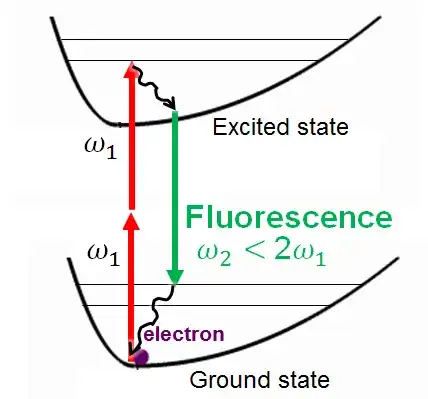Another form of two photon emission is two photon excited fluorescence.
Two photon absorption is the absorption of two photons by a molecule to excite from ground state to excited state.
Two-photon absorption can lead to two-photon-excited fluorescence where the excited state produced by TPA decays by spontaneous emission to a lower energy state.

First, there is a two photon absorption, then a non-radiative deexitation, and a fluorescent emission. The electron returns to ground state by another non-radiative deexitation.
https://en.wikipedia.org/wiki/Two-photon_absorption
Now you are asking about two photon emission, and phosphorescence is a type of multi-photon emission, where the absorbed energy is released by the emission of multiple photons.
Phosphorescence is a type of photoluminescence related to fluorescence. Unlike fluorescence, a phosphorescent material does not immediately re-emit the radiation it absorbs. The slower time scales of the re-emission are associated with "forbidden" energy state transitions in quantum mechanics. As these transitions occur very slowly in certain materials, absorbed radiation is re-emitted at a lower intensity for up to several hours after the original excitation.
https://en.wikipedia.org/wiki/Phosphorescence
Two photon emission (stimulated) is possible by semiconductors.
We report the first experimental observations of two-photon emission from
semiconductors, to the best of our knowledge, and develop a corresponding theory for the
room-temperature process. Spontaneous two-photon emission is demonstrated in
optically-pumped bulk GaAs and in electrically-driven GaInP/AlGaInP quantum wells.
https://arxiv.org/abs/quant-ph/0701114
